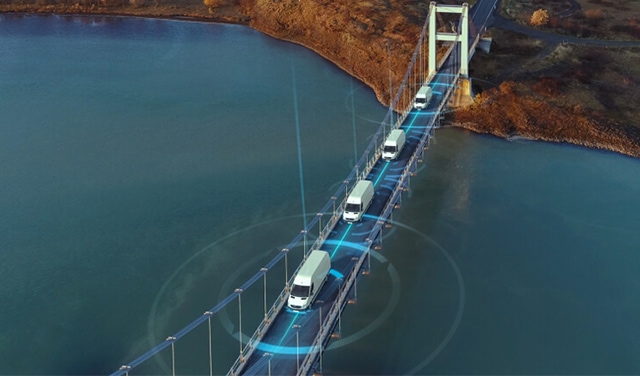We’ve written before about the growing role of software and connectivity in the automotive space and the massive expansion in internal computing in vehicles. Computerized applications are used widely for both driving and safety features and for the V2X (vehicle-to-everything) user/consumer experience.
Why Does my Car Need a Software Update?
Cars and trucks are still primarily used for getting from point A to point B, but now, that’s only the start. Newer vehicles are equipped with software-driven sensors and cameras to enhance safety and make driving easier. Plus, drivers and passengers also want to be able to obtain information as they drive:
- What attractions and lodging are available at their destination
- Options for restaurants, coffee shops, and gasoline or EV charging stations along the way
- Local weather and traffic updates
- WiFi connectivity for en route purchases
- Satellite radio and infotainment services
As we know from our smartphones, software gets updated frequently, so OEMs and service providers rely on vehicle connectivity to push updates to cars and trucks over the air. This keeps equipment up-to-date and keeps drivers and passengers connected to the world outside the windshield.
Here’s How Auto OEMs are Overlapping with Tech Companies
While you probably wouldn’t replace your cell phone with a vehicle, there is significant overlap between the features of the two. If we start to think of vehicles as devices powered by software, it’s easy to see that vehicle software development is critical to an OEM’s ability to stay ahead.
As this article points out, job openings and postings can be revealing. A review of the types of jobs companies advertise provides insight to the direction they’re moving. More and more auto companies and their suppliers are listing jobs that include “autonomous vehicle” or “self-driving car.”
Examples of software development include:
- Pushing software updates to vehicles via onboard WIFI hotspots
- Adding internal screens and controls with smartphone-like capabilities (e.g. apps, connectivity)
- Developing automotive inventory management systems to link dealerships with production facilities to pinpoint the exact vehicles headed their way to optimize the timing of sales and delivery (as GM CEO Mary Barra explains in an interview with CNBC)
- Computerized solutions for optimizing battery thermal management
- Sensors that enable safety and self-driving features (e.g. lane monitoring/drift monitoring assistance, braking assistance, seamless backup camera display)
What’s more, the simple fact that a semiconductor shortage can have such a big impact on the automotive industry proves how critical this single component is and how widespread its use in vehicles has become.
What Does it Mean for Suppliers?
Importantly, there are still plenty of vehicles being produced that use legacy internal combustion engines, so relationships with OEMs for those components are still critical. Suppliers who can continue to produce the parts needed for the wide variety of vehicles OEMs produce as they change rapidly will come out ahead. Companies that manufacture strictly EVs are important too but they won’t fully replace the automakers with a mix of products. In a recent CNBC interview, former Ford CEO, Mark Fields, points out that OEMs may have an advantage over electric-only auto companies including:
- Years of experience with production at scale
- Well-established quality standards
- A range of vehicles to offer in different trim lines and price points (i.e. not just high-end, pricey models)
According to Fields, the key to sustainable EV growth and wide-scale consumer buy-in is getting these vehicles into the garages of consumers across the economic spectrum, not just high earners. Fields notes that around the world government support of charging infrastructure development and other financial incentives have helped EV growth take off in other countries.
How Can You Stay Relevant in the Electric, Semi-autonomous, and Connected Vehicle Space?
To stay relevant in this changing marketplace, suppliers must stay aware of the latest developments in EV and battery technology and the components that go into this new generation of vehicles. One way to do this is through industry events such as the upcoming Stamping in an EV World conference. Then, find partners with the capabilities to make those components so you can continue to supply what is in highest demand.
In her recent interview, Barra notes that GM has used its internal creativity to maximize its options during the economic downturn from COVID-19 and the ongoing semiconductor shortage. That innovation won’t stop, so it’s best to know your options for producing the components and assemblies they need. When it comes to stamping, CEP is a partner for both ICE and EV miniature to small stampings. Please contact us!

